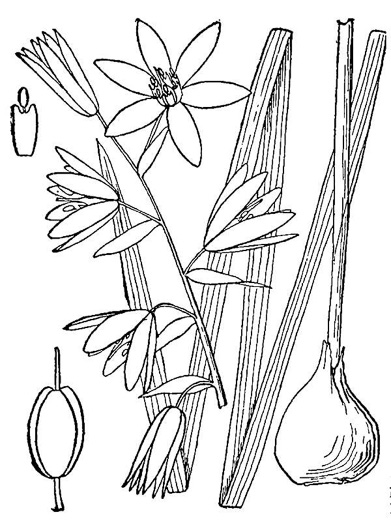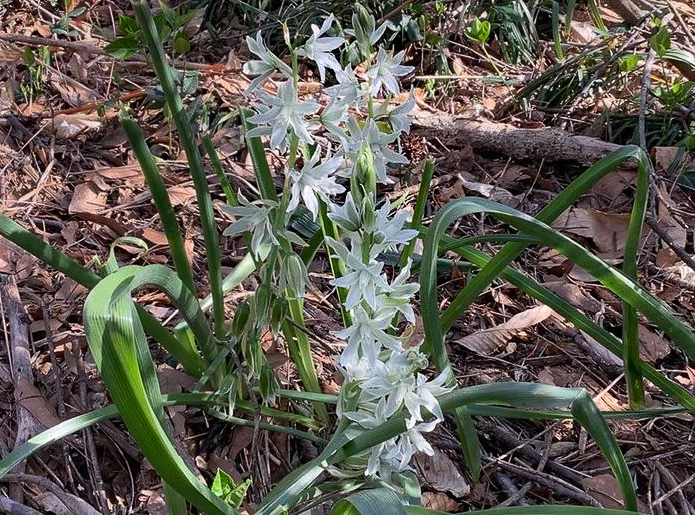Spermatophytes (seed plants): Angiosperms (flowering plants): Monocots: Asparagales
WEAKLEY'S FLORA OF THE SOUTHEASTERN US (4/24/22):
Ornithogalum nutans
FAMILY
Hyacinthaceae
Go to FSUS key
Dig deeper at SERNEC, a consortium of southeastern herbaria.
Check out EDDMapS.org to see where this has been reported.
Learn more about Drooping Star of Bethlehem from the Vascular Plants of North Carolina.
SYNONYMOUS WITH
PLANTS NATIONAL DATABASE:
Ornithogalum nutans
FAMILY
Liliaceae
SYNONYMOUS WITH Flora of North America
Ornithogalum nutans
SYNONYMOUS WITH VASCULAR FLORA OF THE CAROLINAS (Radford, Ahles, & Bell, 1968) 041-28-002:
Ornithogalum nutans FAMILY Liliaceae
COMMON NAME:
Drooping Star-of-Bethlehem
To see larger pictures, click or hover over the thumbnails.
Dixie Damrel dzd_031023_o_nutans
March Greenville County SC
Swamp Rabbit Trail
Inflorescence racemose and cylindrical (vs. O. umbellatum corymbose and rounded or flat-topped), per Weakley's Flora (2022).
WEAKLEY'S FLORA OF THE SOUTHEASTERN US (4/24/22):
Ornithogalum nutans
FAMILY
Hyacinthaceae
SYNONYMOUS WITH
PLANTS NATIONAL DATABASE:
Ornithogalum nutans
FAMILY
Liliaceae
SYNONYMOUS WITH
Flora of North America
Ornithogalum nutans
SYNONYMOUS WITH
VASCULAR FLORA OF THE CAROLINAS (Radford, Ahles, & Bell, 1968) 041-28-002:
Ornithogalum nutans
FAMILY
Liliaceae
If a search such as "Carex leptalea var. leptalea" doesn't deliver the results you want, try "Carex leptalea".
Or, to minimize chances of a misspelling, try just "Carex le".
Less is more: If "pencil flower" doesn't deliver the results you want, try "pencil".



